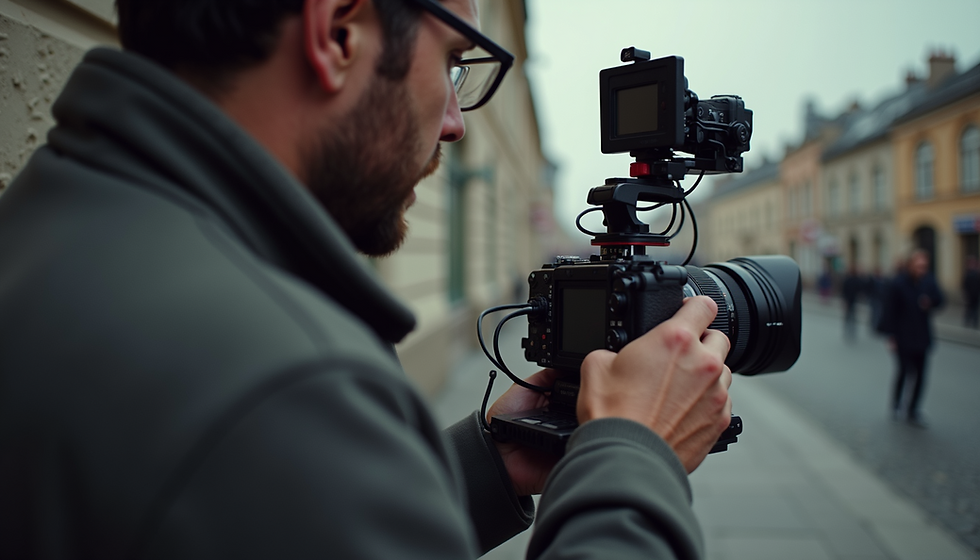Unlocking the Potential of Creative Platforms in Filmmaking
- Oct 20
- 3 min read
Filmmaking is an art that thrives on collaboration, innovation, and the seamless integration of ideas. In today’s digital age, creative collaboration tools have become essential for filmmakers to bring their visions to life efficiently and effectively. These tools enable teams to work together, share ideas, and manage projects regardless of their physical location. This blog post explores how these tools are transforming the filmmaking process, practical ways to use them, and how they unlock new creative possibilities.
The Role of Creative Collaboration Tools in Modern Filmmaking
Creative collaboration tools are software or platforms designed to facilitate teamwork, communication, and project management. In filmmaking, these tools help directors, producers, editors, and other crew members coordinate their efforts. They allow for real-time feedback, file sharing, and task tracking, which are crucial for meeting deadlines and maintaining creative consistency.
For example, cloud-based editing platforms enable editors to work on footage from anywhere, while project management apps keep everyone updated on schedules and responsibilities. This reduces the need for physical meetings and speeds up the production process.
Key benefits include:
Improved communication: Instant messaging, video calls, and comment threads keep everyone in the loop.
Centralized resources: All scripts, storyboards, and footage are stored in one accessible place.
Enhanced creativity: Teams can brainstorm and iterate ideas quickly using shared digital whiteboards or mood boards.

How to Choose the Right Creative Collaboration Tools for Your Film Project
Selecting the right tools depends on the size of your team, the complexity of your project, and your budget. Here are some practical tips to help you decide:
Identify your needs: Do you require tools for scriptwriting, editing, scheduling, or all of these? Make a list of must-have features.
Consider ease of use: Choose platforms with intuitive interfaces to minimize the learning curve.
Check compatibility: Ensure the tools work well with your existing software and hardware.
Look for collaboration features: Real-time editing, commenting, and version control are essential.
Evaluate cost: Many tools offer free tiers or trial periods. Test them before committing.
For instance, a small indie film team might prioritize affordable cloud storage and communication apps, while a larger studio may invest in comprehensive project management suites.
Using creative platforms can streamline these processes by offering integrated solutions tailored to filmmakers’ needs.

What is an example of a brand creative platform?
A brand creative platform is a centralized system that helps maintain consistency in a brand’s visual and narrative identity across all projects. In filmmaking, this can mean a platform that stores brand guidelines, templates, and approved assets for use in promotional videos or branded content.
For example, a major film studio might use a brand creative platform to ensure that all trailers, posters, and social media content align with the studio’s style and messaging. This platform allows marketing teams and filmmakers to collaborate seamlessly, reducing errors and speeding up production.
One well-known example is Adobe Creative Cloud, which offers tools for video editing, graphic design, and asset management, all integrated into one platform. This helps teams maintain brand consistency while fostering creativity.

Practical Tips for Maximizing the Use of Creative Collaboration Tools
To get the most out of your creative collaboration tools, consider these actionable recommendations:
Set clear roles and responsibilities: Define who is responsible for each task to avoid confusion.
Establish communication protocols: Decide how and when the team will communicate updates or feedback.
Use templates and checklists: Standardize processes to save time and maintain quality.
Schedule regular check-ins: Virtual meetings help keep the project on track and address issues promptly.
Encourage feedback: Create a culture where team members feel comfortable sharing ideas and critiques.
Additionally, integrating tools like cloud storage with project management apps can automate workflows. For example, when a scene is edited and uploaded, the editor can notify the director instantly through the platform.
The Future of Filmmaking with Creative Collaboration Tools
As technology advances, creative collaboration tools will become even more sophisticated. Artificial intelligence and machine learning could automate routine tasks like color correction or script analysis, freeing filmmakers to focus on storytelling.
Virtual reality (VR) and augmented reality (AR) integration will allow teams to visualize scenes and sets before filming begins, enhancing pre-production planning. Moreover, blockchain technology might be used to secure intellectual property rights and streamline payments.
By embracing these tools, filmmakers can unlock new levels of creativity and efficiency, making it easier to produce high-quality content that resonates with audiences worldwide.
Unlocking the potential of creative collaboration tools is not just about adopting new technology; it’s about transforming how filmmakers work together to tell compelling stories. By choosing the right platforms, setting clear workflows, and staying open to innovation, filmmakers can elevate their craft and bring their visions to life like never before.
_edited.png)



Comments